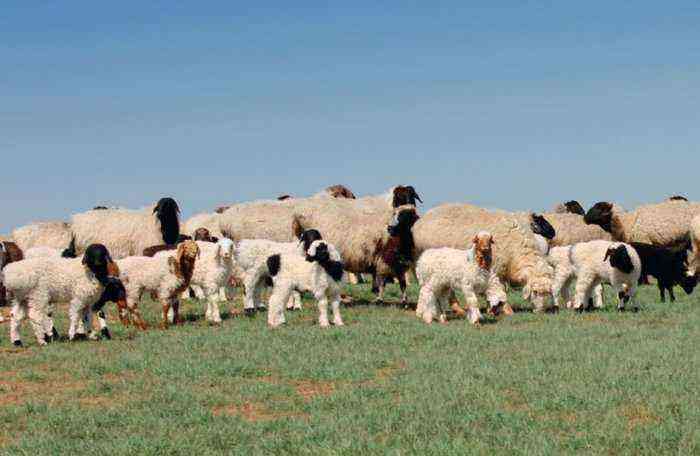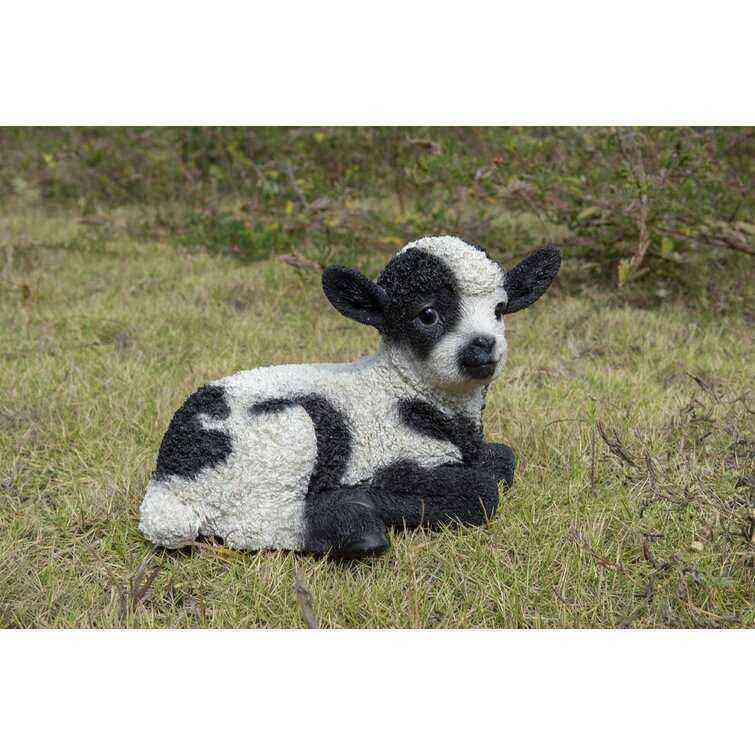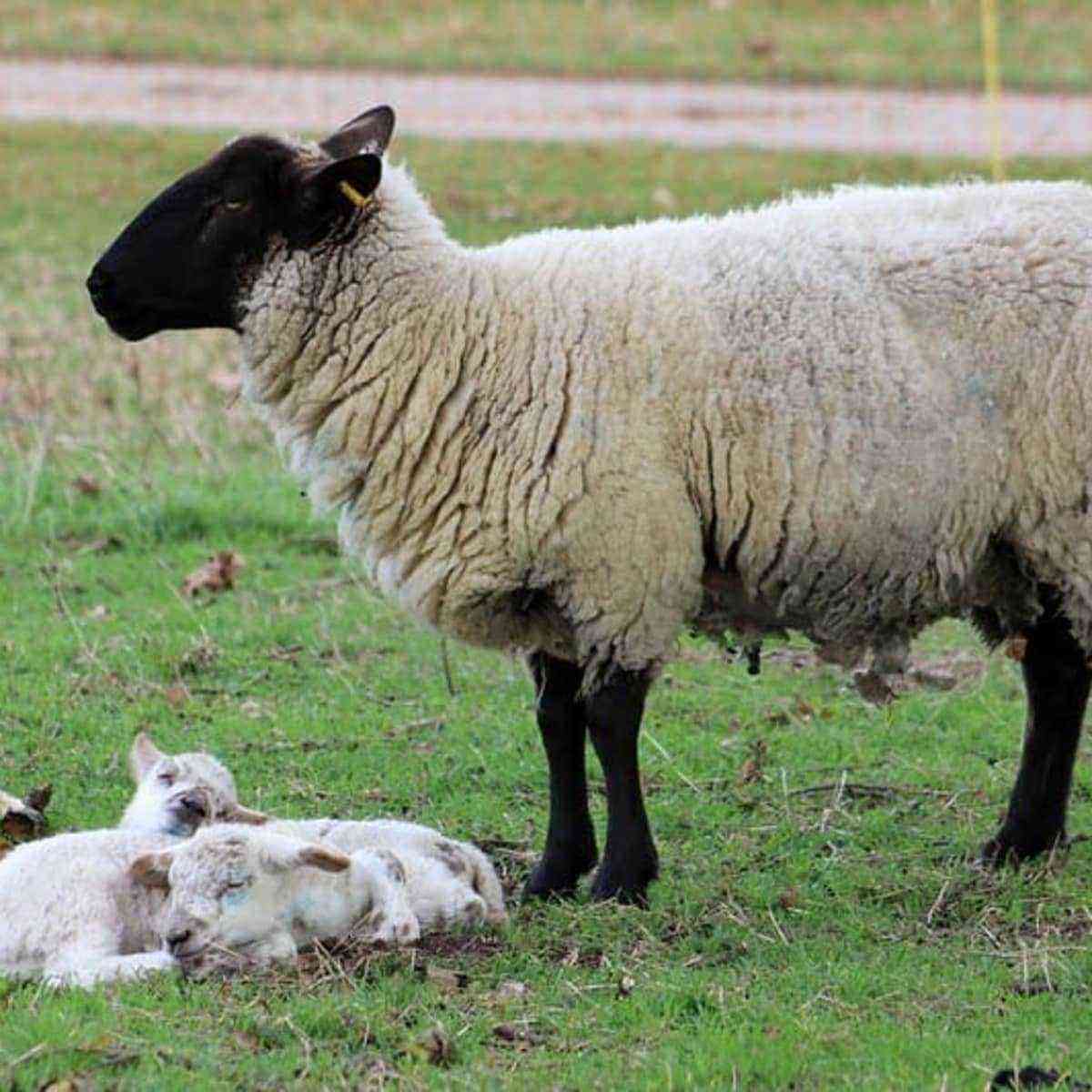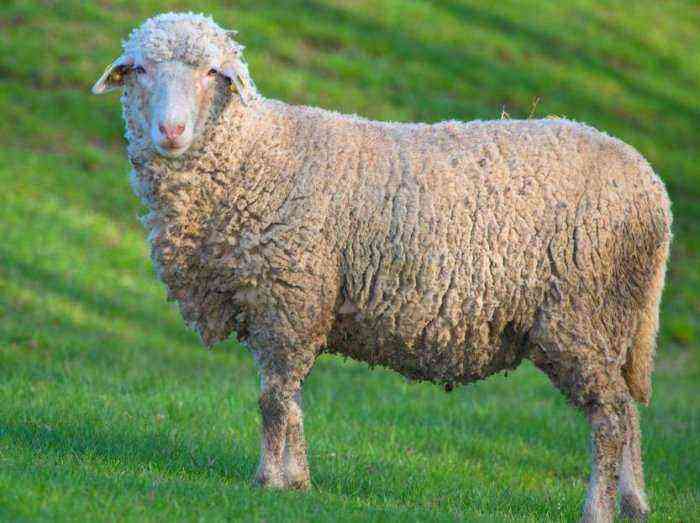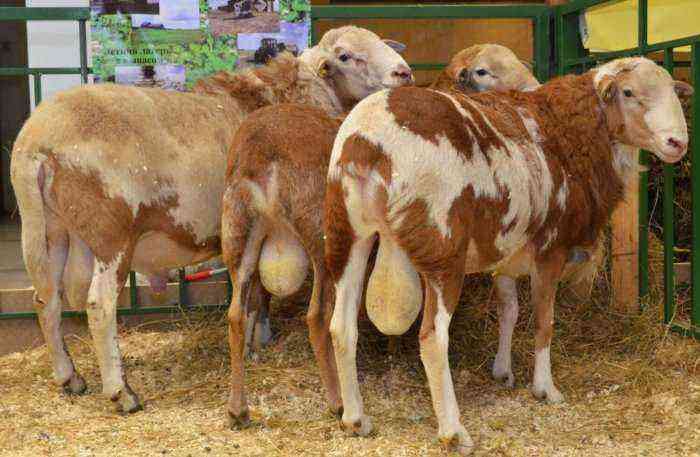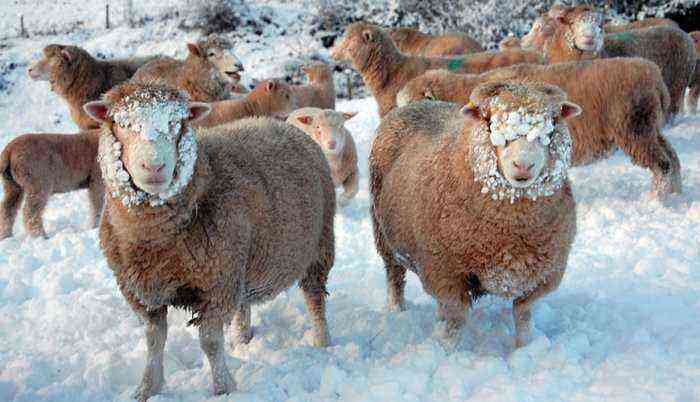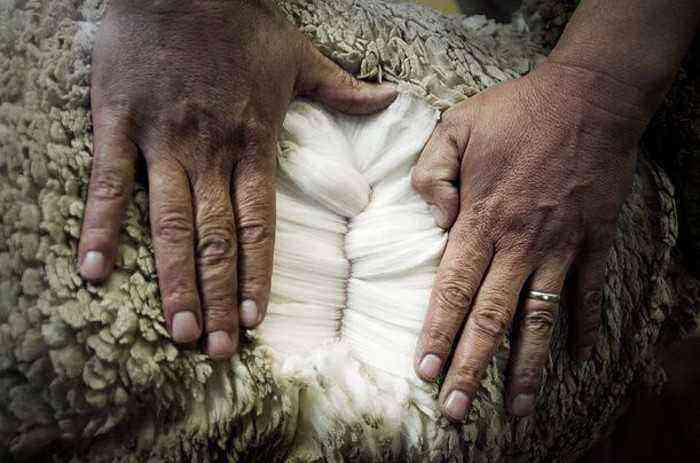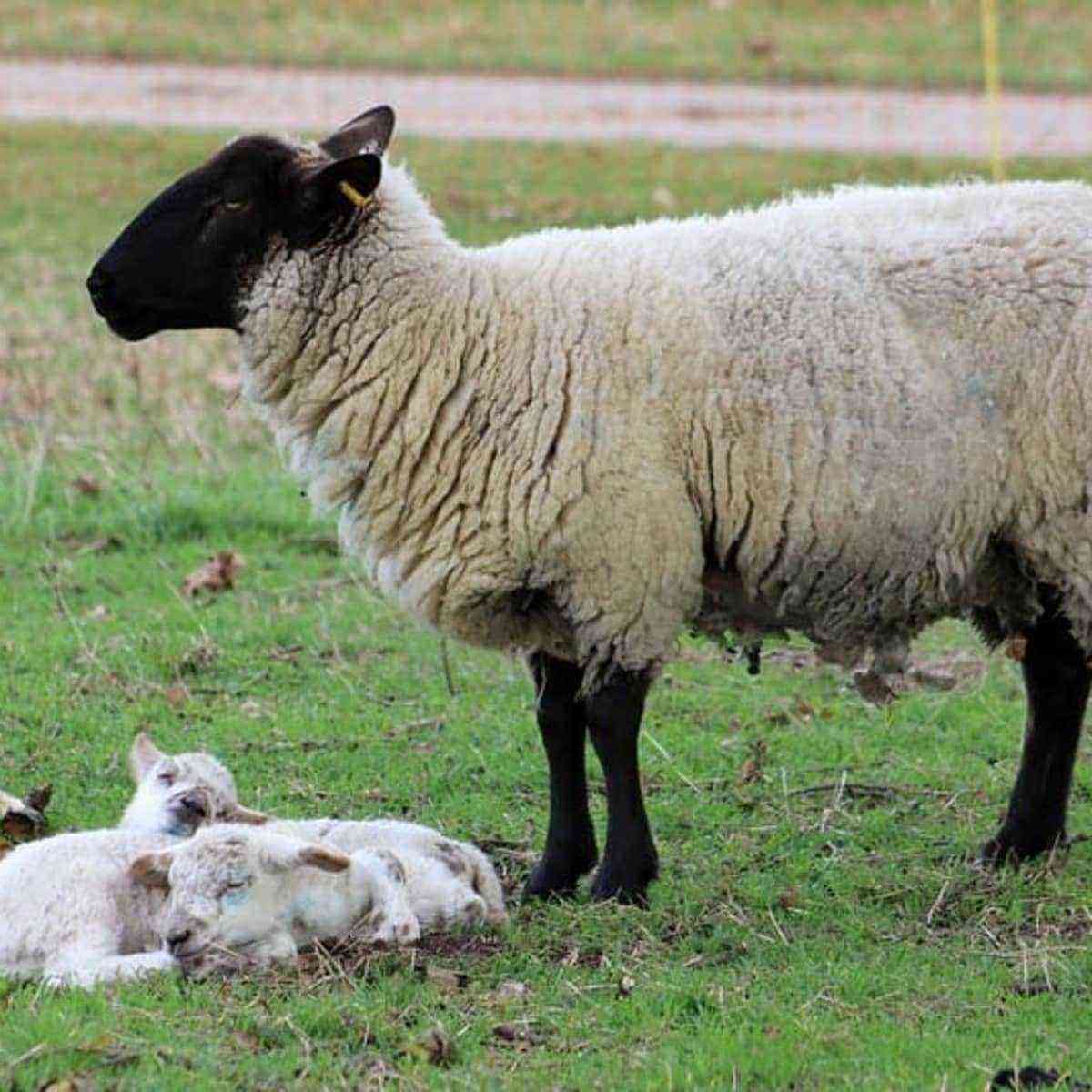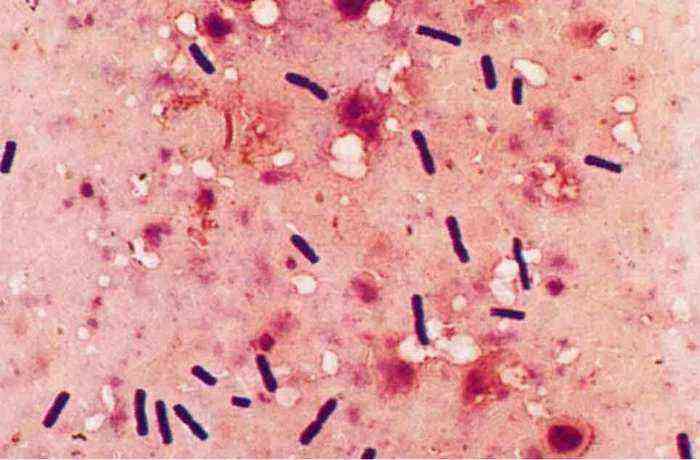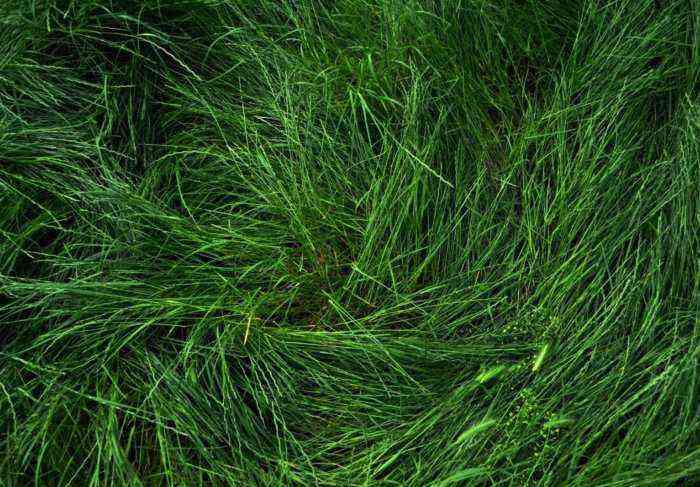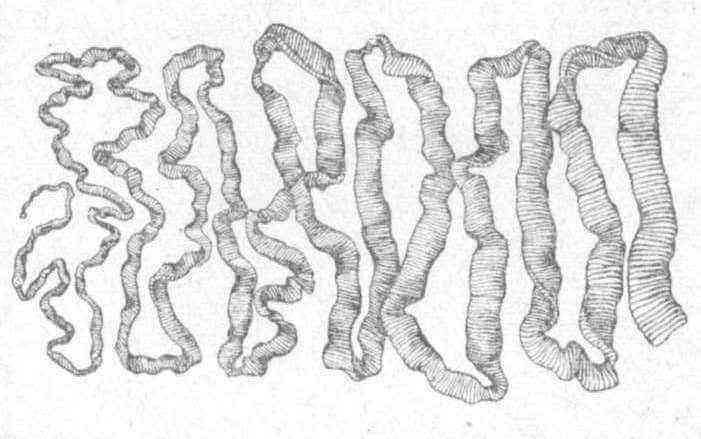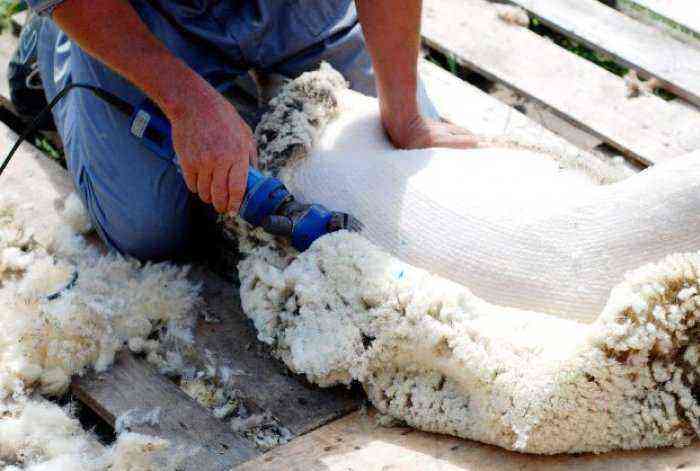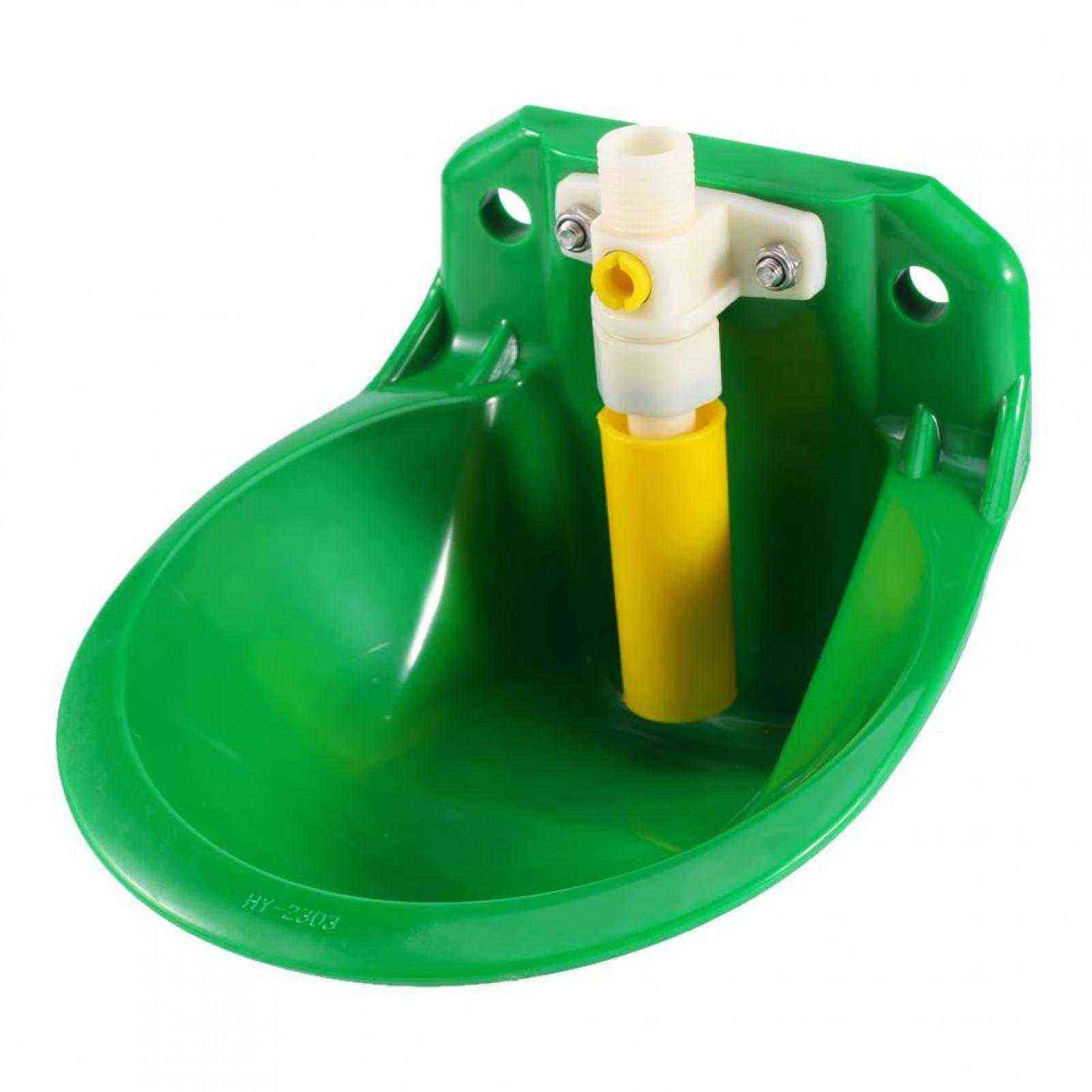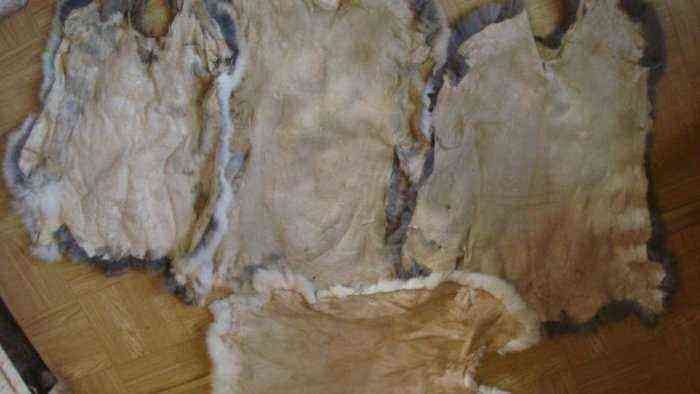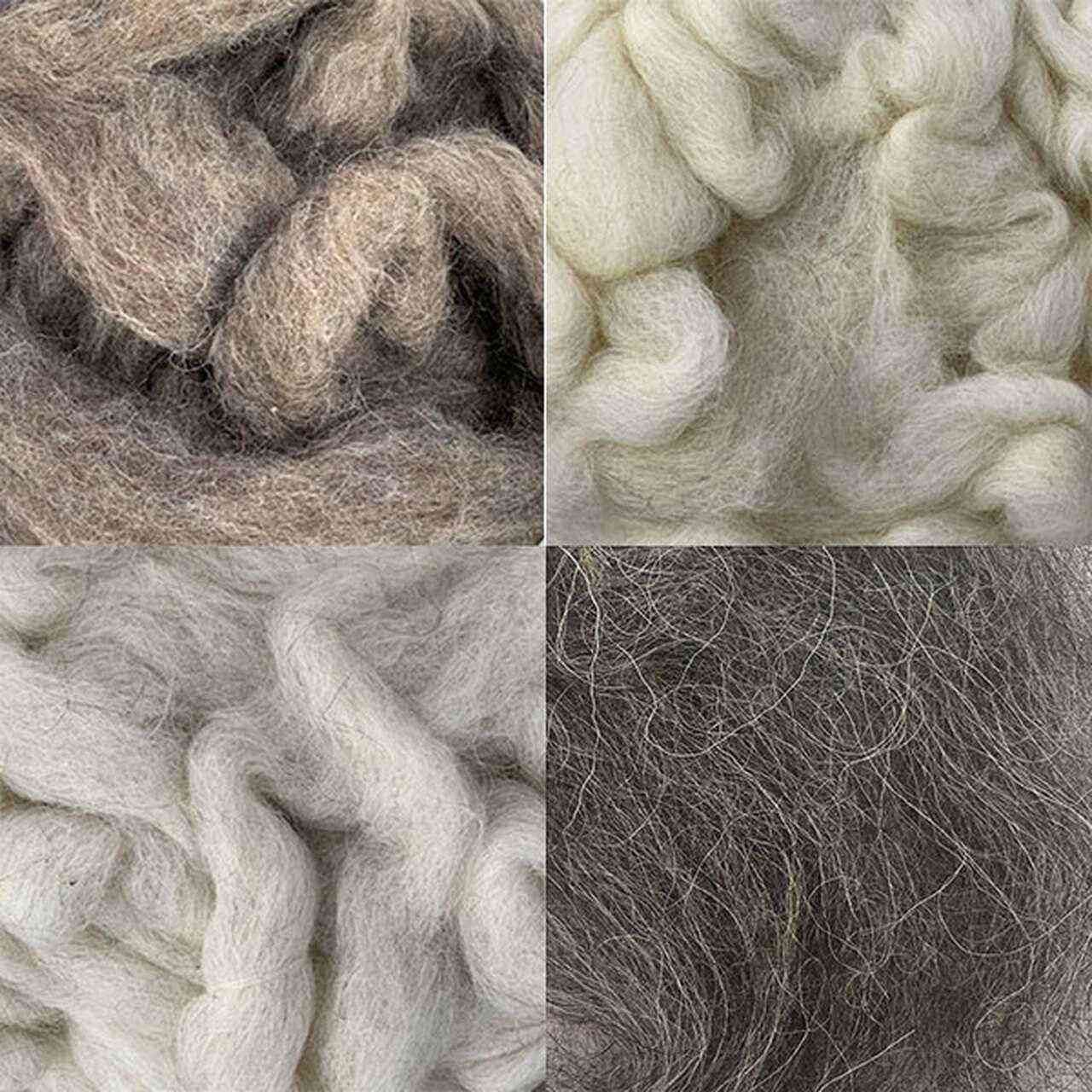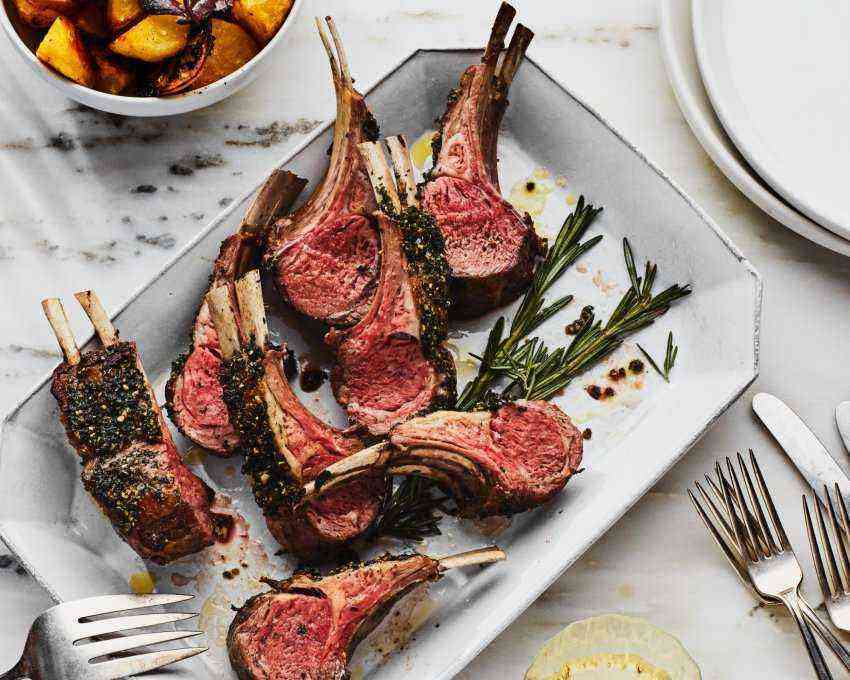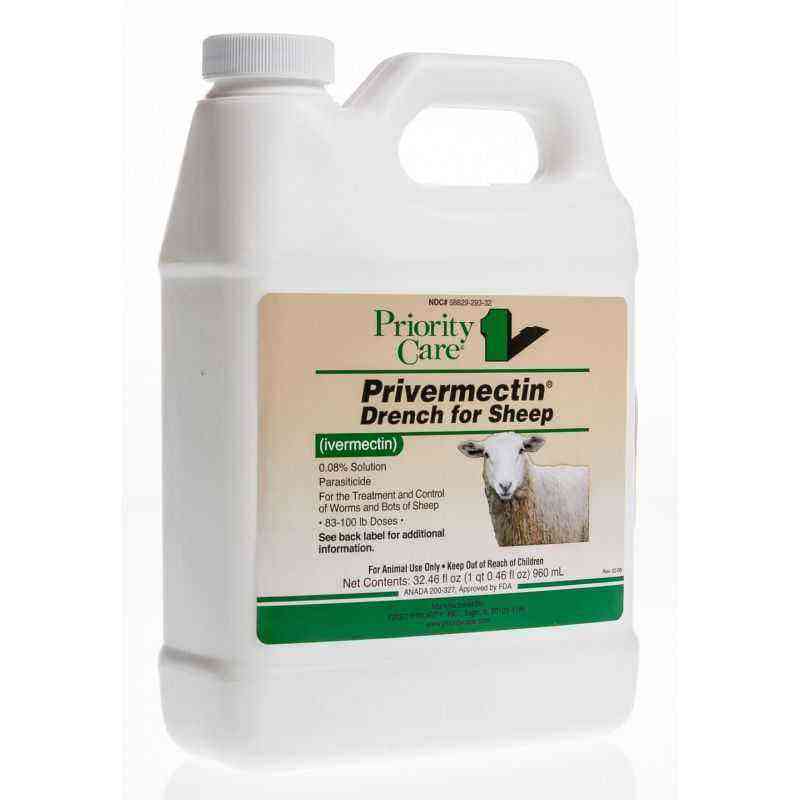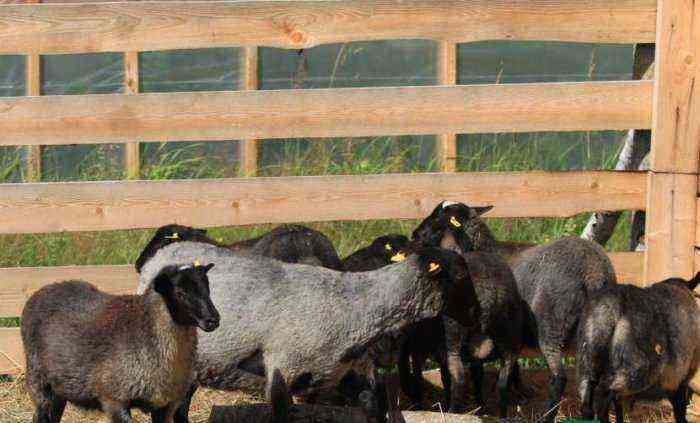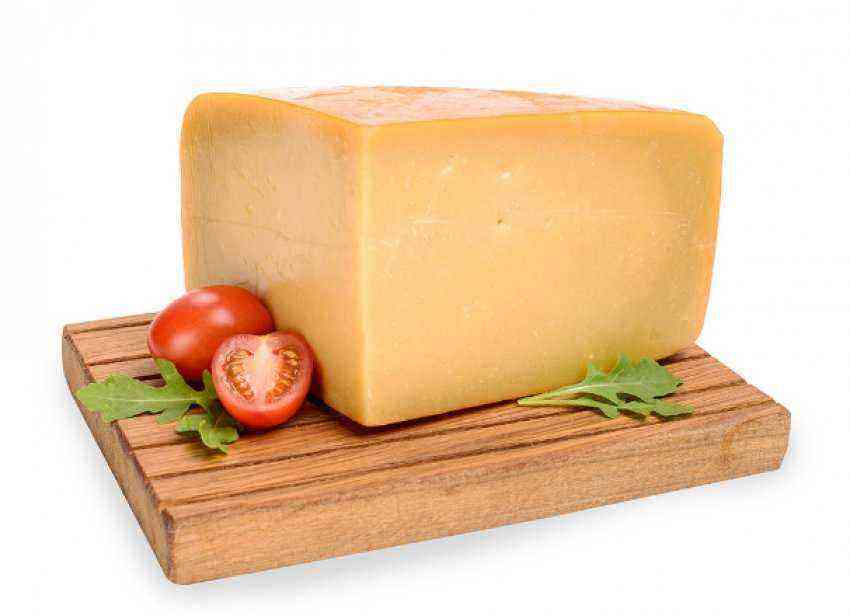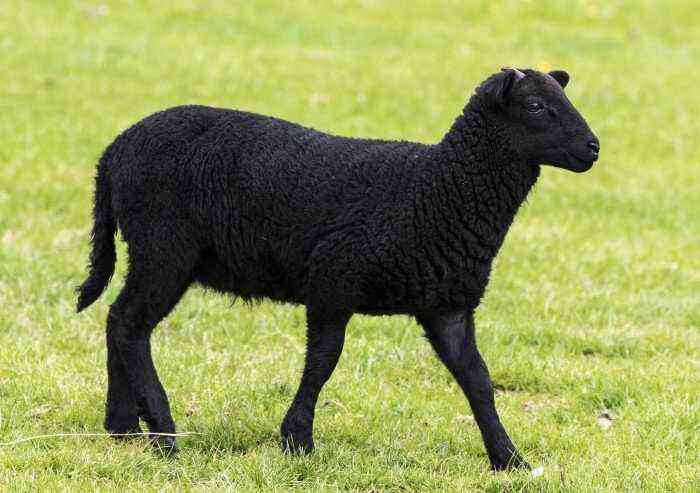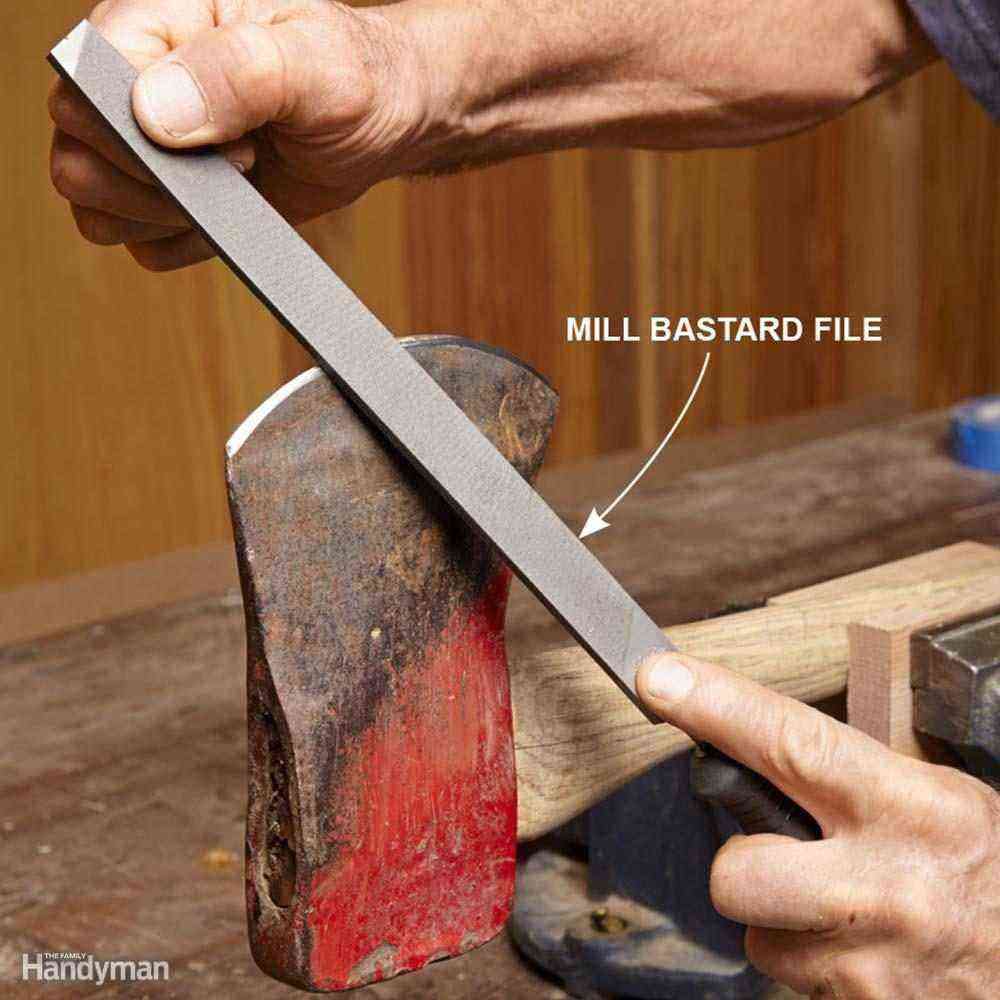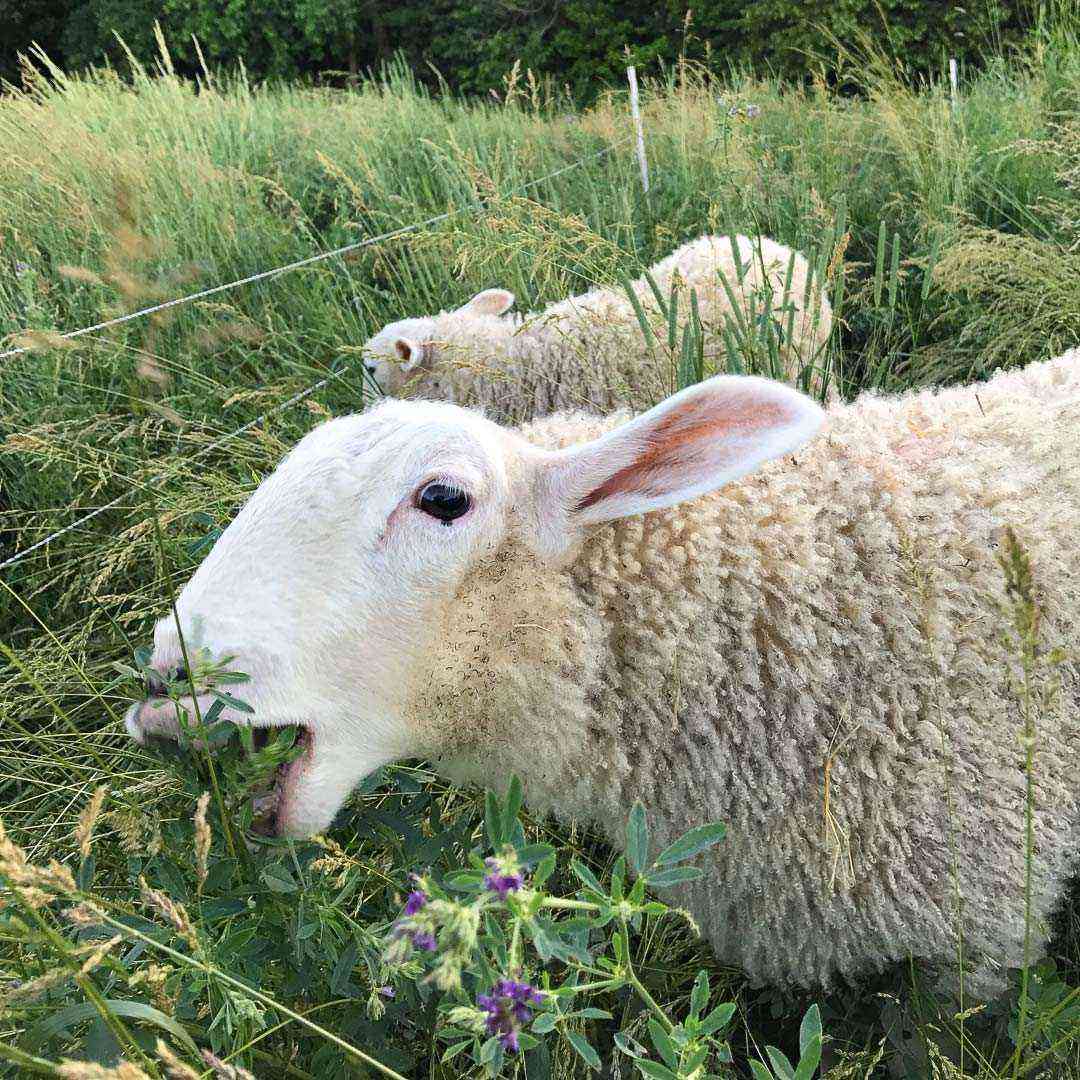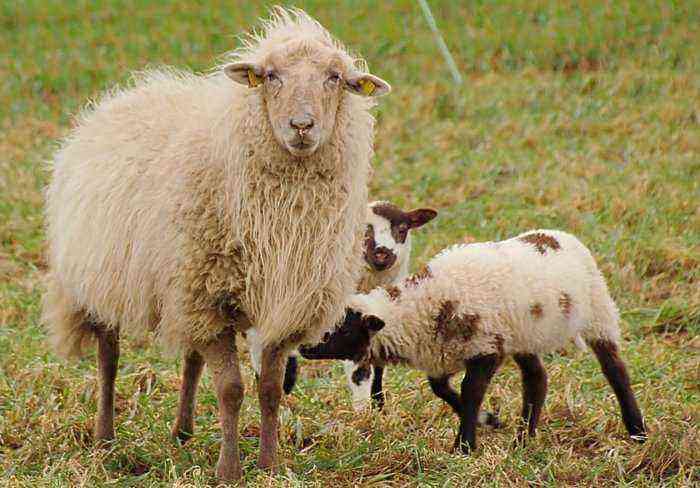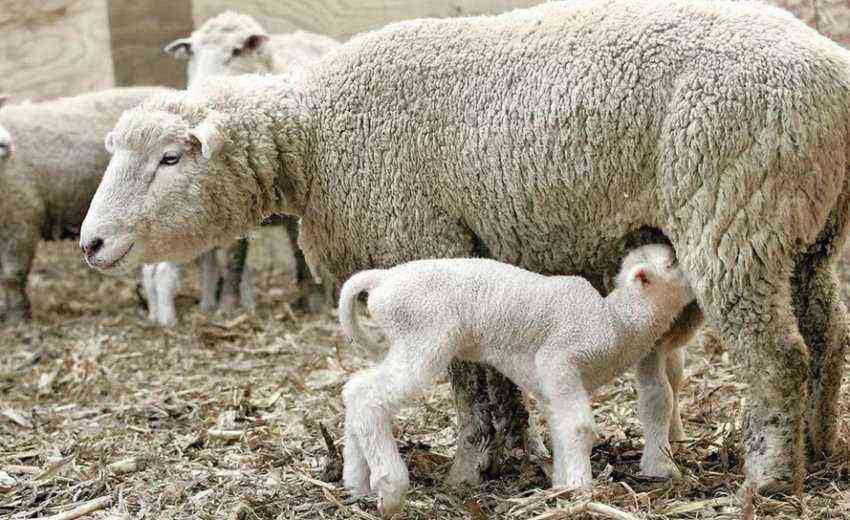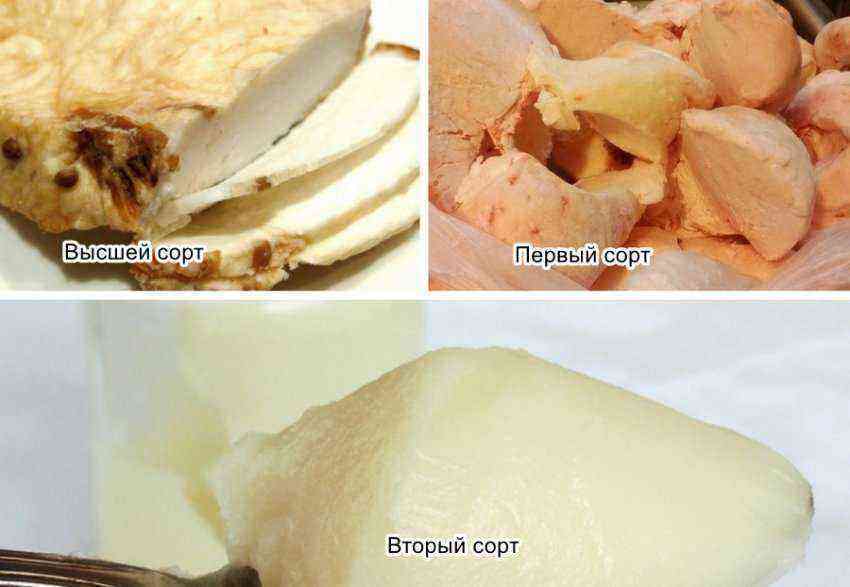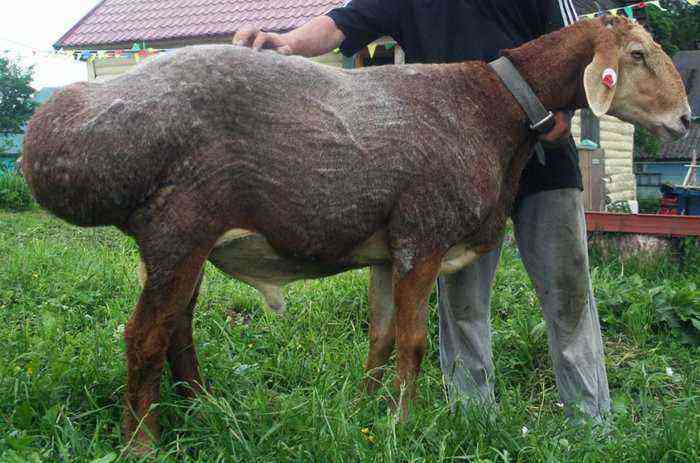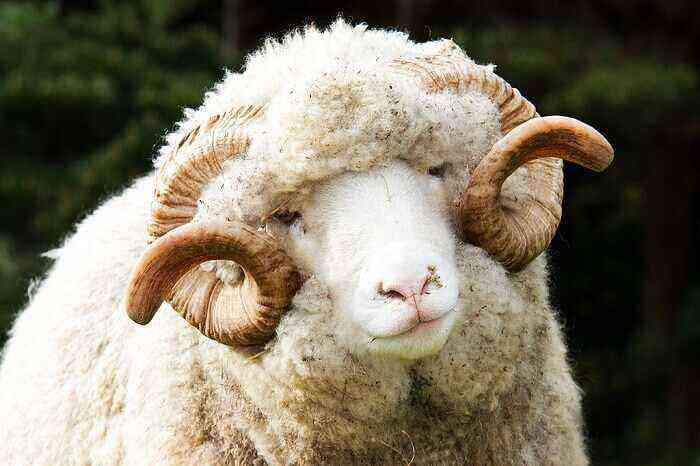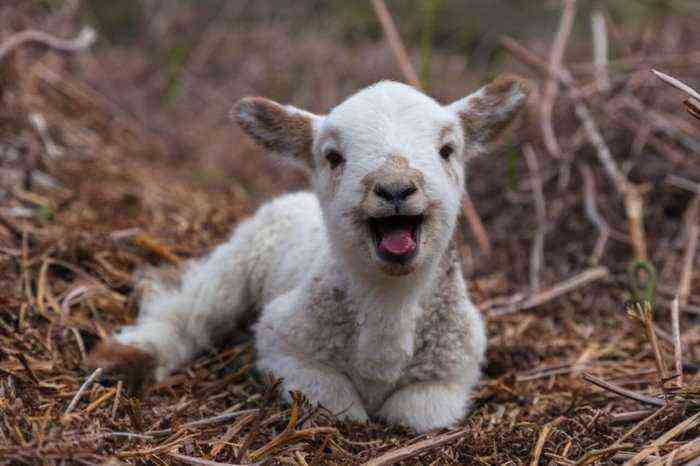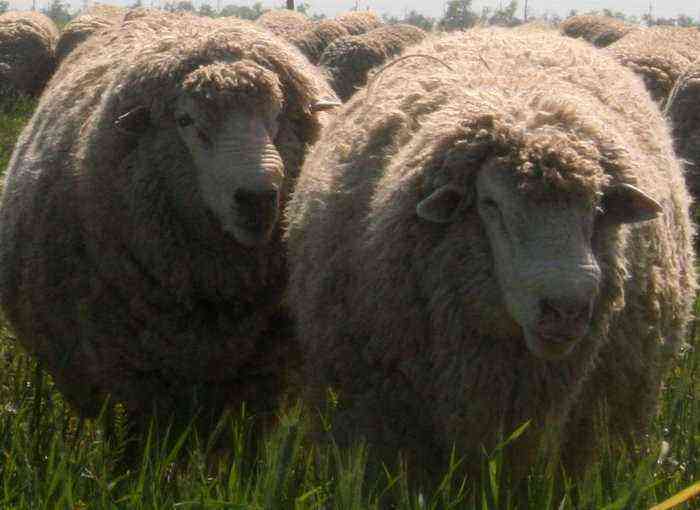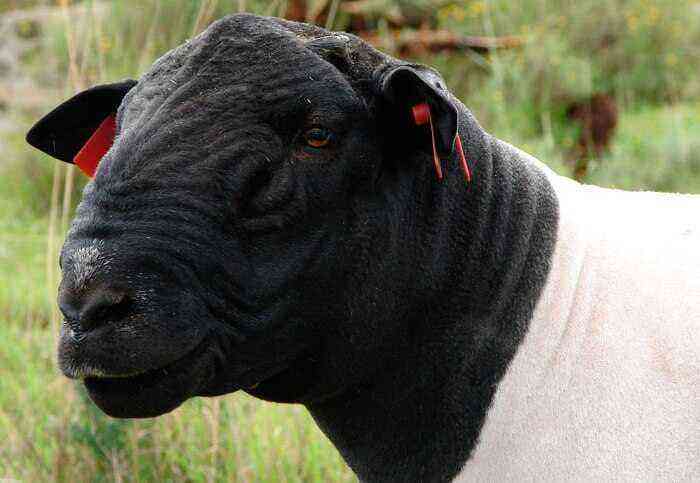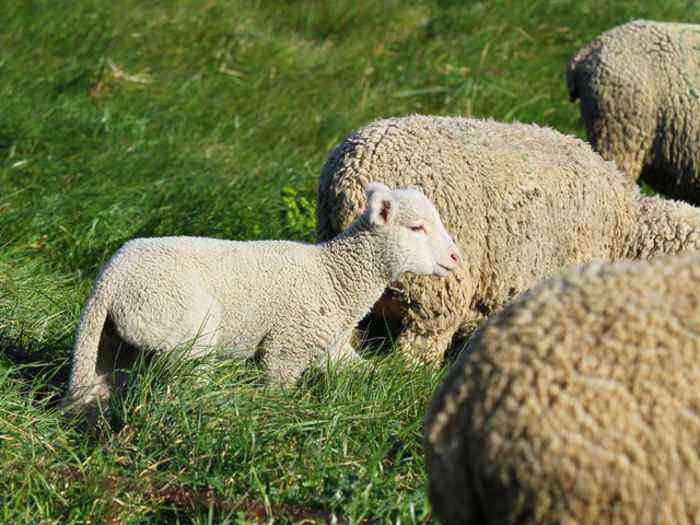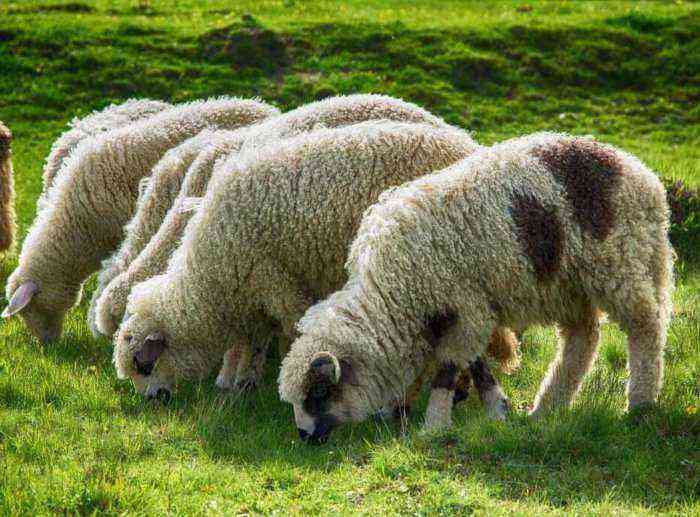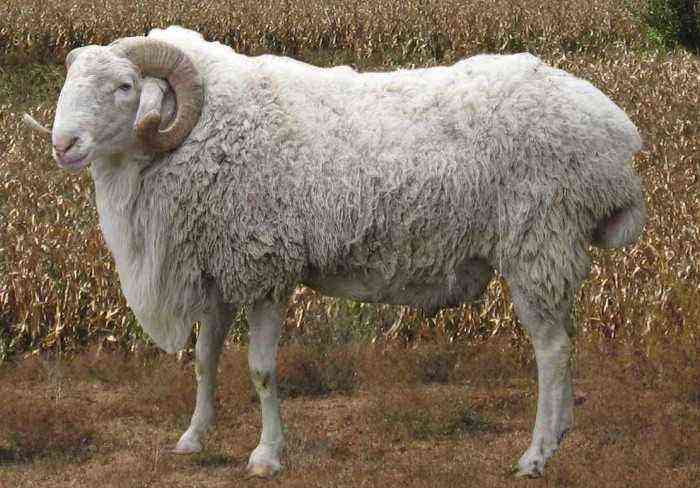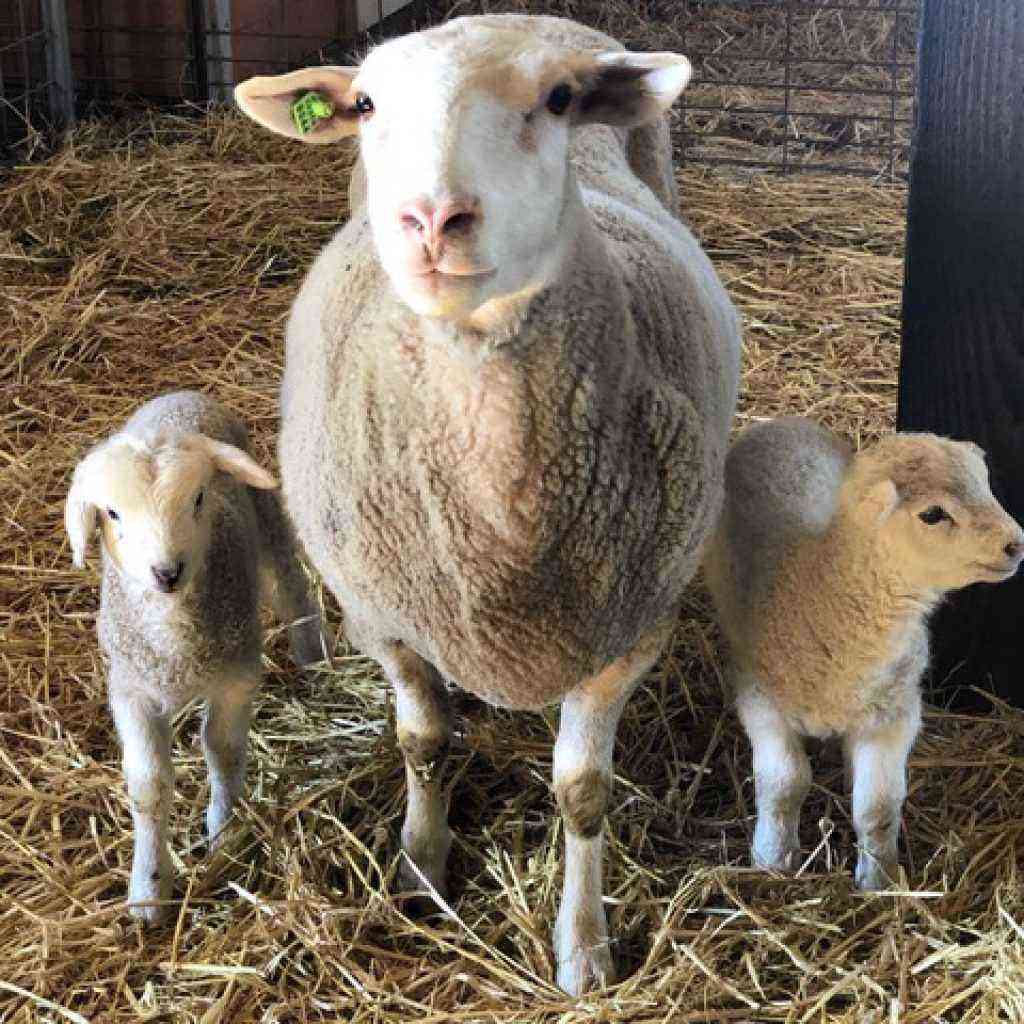Each sheep breeder must have information about the birth of their wards. About how long pregnancy lasts, how to determine that the mating was successful, as well as about the features of the lambing process itself and further care for the uterus, read below.
Pregnancy (pregnancy) and lambing of sheep: what you need to know
A sheep brings lambs once a year. This applies to all breeds, except for the Romanov, as well as crossbreeds with it (multiple varieties of sheep). In principle, any sheep can bring lambs up to 3 times a year, but this approach is not practiced in this livestock industry, because the body of the female wears out during gestation and childbirth, which leads to a reduction in life expectancy.
Did you know? The pupil of a sheep has a rectangular shape. The same feature is different octopus, goat and mongoose.
Farming is considered ideal in which sheep give birth once a year. Breeding sheep involves a clear planning of the time of mating, in order to reduce the cost of animal feed. The ideal time for breeding females with males is September-October. In this case, childbirth falls on February-March.
Already after a month, the sheep can be organized for free-range animals and transferred to pasture. Pregnancy and lactation in females of all breeds is the same. Babies are weaned from their mothers at 3 months. In the same period, there is a peak in milk production, after which milk yields become much less. Under the condition of milking twice a day, lactation can be extended for another 2-3 months.
Selection, preparation and insemination of sheep
Preparing females for insemination:
- Transfer sheep to enhanced nutrition about 1,5 months before mating.
- 2,5 months before insemination, wean lambs from already giving birth females and gradually stop milking (similarly, the gestation period begins in cows).
- Conduct a veterinary examination of all females for mastitis, damage to teeth and hooves.
- Organize the prevention of helminths, after the cessation of milking, 2 weeks before mating.
- Make the vaccinations required for the animals according to the schedule.
Insemination can be done naturally or artificially. It is carried out when the females begin sexual hunting. This is determined by behavioral reactions and the condition of the external genital organs. Sheep become more accommodating, let males approach them. The labia swell a little, acquire a brighter red color, transparent pink mucus is released from them. Sexual hunting lasts about 24 hours, in rare cases 48 or 86.
Important! If insemination is carried out naturally, then the male should also be prepared for this process by transferring it to a more intensive fattening. But at the same time, you need to make sure that the ram is not obese, otherwise the quality of the seminal fluid will deteriorate.
Signs of pregnancy in a sheep
The main sign that insemination was successful is the absence of symptoms of re-heat 18 days after mating. But, only by him it is impossible to judge the presence of pregnancy – sometimes a non-pregnant female may not have repeated sexual hunting due to health problems.

There are several ways to determine pregnancy in sheep:
- Focusing on the reflex reactions of animals – 3 weeks after the mating, a ram is launched into the corral to the females. The male will show no interest in already pregnant females.
- By palpation – manipulation involves probing the abdomen of a sheep. It is carried out 60 days after mating. Before performing the procedure, the animal is not given food for 12 hours, so that the stomach is completely cleared of food, and the uterus is easier to feel. When all the preparations are made, you need to place yourself behind the cattle, gently put your hands on the abdomen closer to the groin and palpate the internal cavity of the uterus. At this time, the outlines of the cub are already clearly felt, and in addition, the right side of the pregnant female will be larger than the left.
- Laboratory methods – taking blood tests to determine the amount of progesterone (carried out 20 days after mating), the study of mucus from the cervix (carried out 2-3 weeks after insemination).
- US – the most progressive method for determining and maintaining pregnancy. It is carried out 3 weeks after mating with the help of specialized equipment.
Duration of pregnancy, signs of approaching lambing
The standard gestation period for sheep is 145 days. On the 146th, lambing occurs. But, some individuals can bear longer or less.
The following factors have a direct impact on the gestation period:
- food quality;
- individual characteristics of the development and health of the animal;
- age.
With insufficient intake of minerals along with feed, as well as various health-related deviations, the sheep will carry offspring longer than the due date. Also, the gestation period increases if the female gives birth for the first time. The livestock in question generally tolerates the birthing process well and human intervention is rarely required. However, it is better to be on the alert and keep everything under control in order to have time to help the animal in case of unforeseen situations.

To do this, you need to study information about the signs of approaching childbirth. So, 2–3 days before the start of the process, the udder of the sheep begins to fill up, it becomes swollen, filled with milk. In addition, the abdomen begins to sag, the back of the body drops, the genitals swell, acquiring a brighter shade, and the tail thickens and becomes soft. Having noticed the above prerequisites, indicating the approach of childbirth, it is better to place the female in a separate, dry, clean room.
The behavior of the pet will indicate the beginning of childbirth. The fact that the cattle will be lazy in the next XNUMX hours can be recognized by her anxiety. She begins to walk around the paddock, constantly looks around, refuses food. Just before lambing, the ewe gets up and lies down all the time.
Lambing: process, duration
The first phase of lambing is the opening of the uterus. Under the influence of uterine contractions (contractions), the amniotic sac moves into the birth canal. This phase will last 1-2 hours. During all this time, the contractions become more frequent, stronger, the udder and labia acquire an intense red color, and become very swollen. At the end of this phase, a bubble appears from the vagina, bursts, and the discharge of water begins. The ewe licks off the amniotic fluid, and then the next cycle of contractions begins.
 The eye is eternal.
The eye is eternal.
The second phase of labor is the expulsion of the fetus. It lasts from 5 to 50 minutes. At this time, the sheep begins frequent contractions, she rhythmically moves her stomach. A lamb is already visible from the burst bubble – in the normal course of the process, it goes forward with its front legs and head. Between contractions, the ewe gets up, sniffs and licks the amniotic fluid. When the hooves of the front legs, together with the head, are already outside, the baby falls out on its own, while the umbilical cord breaks.
Important! After the birth of the cub, the mother begins to clean his nose from the amniotic membrane and mucus, then licks him completely. This is one of the most important moments – postnatal contact between mother and baby.
If there is more than one cub, then 10-45 minutes after the appearance of the first, the ewe begins to give birth to the next. The birth canal is already open, so the expulsion phase of the fetus immediately begins. After some time, the rest of the amniotic membrane, the placenta, begins to come out. After another 4-6 hours, the afterbirth begins to depart. This completes the lambing. On average, a ewe at the birth of one baby will lamb for 5-9 hours, two – 6-10 hours, more than 2 babies – 10-18 hours (the indicators are described taking into account the time for the afterbirth to leave).
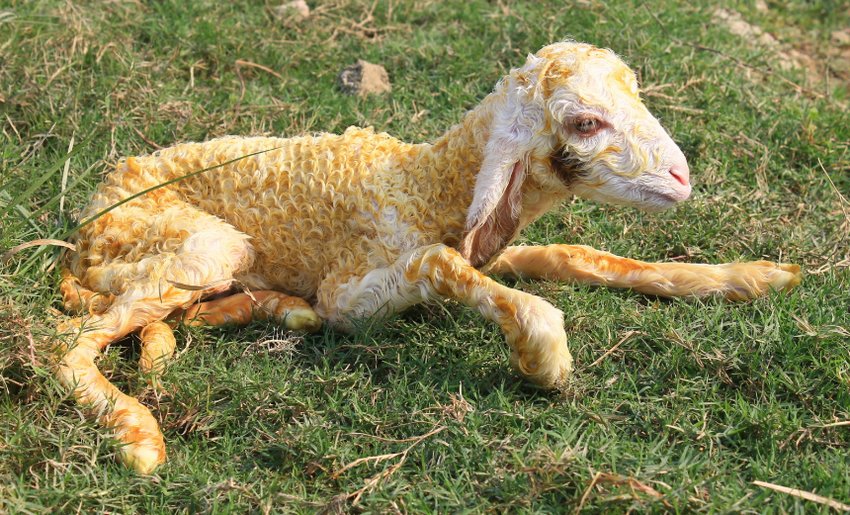
How to take birth in a sheep?
When lambing begins, you need to prepare:
- hot water;
- dry towels or natural cloth;
- iodine;
- sterile sharp scissors.
Human intervention is required at the birth of lambs if they do not walk with their feet and head forward, but with their backs. In this case, measures must be taken to free the baby’s head from the amniotic sac as soon as possible so that he does not suffocate. If the baby goes sideways at all, then the help of a qualified specialist will be required.
Help may also be needed if the umbilical cord has not broken on its own. In this case, you need to treat the scissors with iodine, cut it off at a distance of 8–10 cm from the belly of the lamb. After that, clean the nose of mucus (if the uterus did not do this) with a cloth dipped in water. Also for this purpose, you can use the suction for mucus in children.
Video: how to give birth to a sheep
How many lambs can a sheep bring at a time?
Usually sheep bring 1 or 2 cubs at a time, less often – 3, Romanov – up to 5 babies. When several lambs are born, after 10–45 minutes contractions begin. The ewe will get up and lie down again. After some time, the amniotic sac will come out.
Pathological childbirth
Postpartum illness in sheep is usually the result of the use of non-sterile instruments. In order to avoid such complications, the entire instrument must be boiled, disinfected with iodine, hands should be treated with an antiseptic. If the owner of the flock has small hands, then the tool may not be required at all.
Important! With all deviations from the norm, if you do not have experience in attending childbirth, you need to use the services of a qualified shepherd or veterinarian. Some pathologies will have to be eliminated through surgery.
Every experienced sheep breeder, in case of pathological childbirth, should always have in their arsenal:
- Rope obstetric is a smooth, strong rope, 5 mm thick, 1 m long, which can withstand the force of a person pulling, with an eyelet at one end. It is pre-boiled, treated with an antiseptic, lubricated with petroleum jelly before direct use.
- Witt forceps for pigs and goats – are used to capture an incorrectly lying fetus or in case of improper labor activity (weak contractions or their complete cessation).
- Obstetric hook Dekver – used to extract dead and live fetuses.
- Obstetric Loop Retainer – designed to extract the fetus, in the case when it is too far in the uterine cavity.
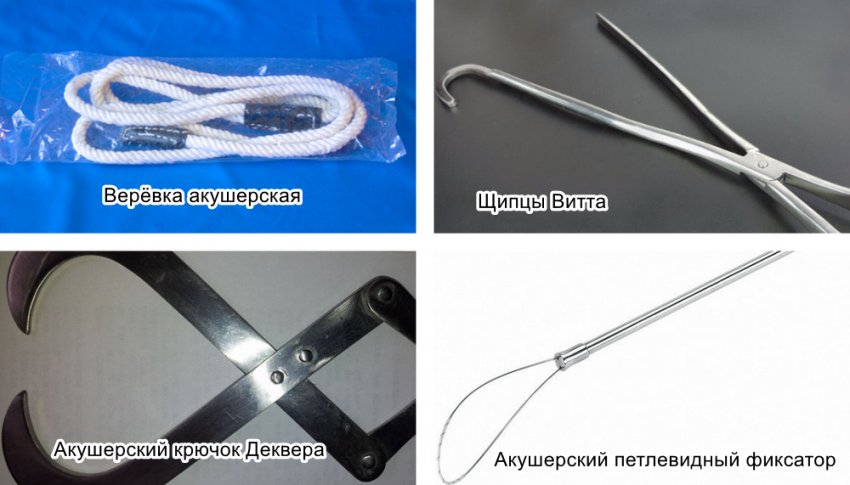
Indications for intervention in the process of childbirth are the following pathologies:
- lowering, throwing back the head;
- flexion of the carpal, elbow, shoulder, hock, hip joints;
- transverse position with abdominal, dorsal presentation;
- vertical position with abdominal presentation;
- one-time advancement into the birth canal of 2 fetuses;
- overdevelopment and deformities of the fetus (2 heads, fused twins, the presence of additional limbs).

Afterbirth
If 6 hours after the birth of the last lamb, there are no signs of discharge of the placenta, you need to take the uterus to the hospital, or, if there has already been a similar practice, inject a medicine that stimulates the discharge of the placenta due to uterine contractions. Usually, Oxytocin is used for this purpose. It stimulates not only the passage of the place, but also the production of milk.
Sheep’s first lamb
The first lambing of a sheep takes place according to the above scheme. The only difference is that usually one baby is born to first-timers. This factor can cause pathological childbirth, because one fetus gains more weight, and therefore can get stuck in the narrow birth canal. In this scenario, human intervention will be required, so you need to prepare more carefully for the first birth.
Lactation
The main condition that determines the full development and good weight gain in lambs is breastfeeding. The first milk product excreted by the ewe is called colostrum. It is necessary to start letting newborn lambs to the mother for feeding as soon as possible. Colostrum for babies plays the role of not only nutrition, but also a laxative, which is vital for the removal of original feces from the intestines. Large lambs are able to stand on their legs right after birth.

Half an hour after birth, babies begin to look for a source of food and water. If feeding does not occur within the next 2 hours, you need to milk the uterus and let the cubs drink colostrum from a clean mug. Before letting the lambs to the uterus, you need to wash the udder area with warm water and laundry soap, then rinse. Cut off the hair that is present in this part of the body, as well as on the hind legs and tail. Then milk the first portions of milk to activate the lactation process.
Feed for the uterus so that there is milk
After giving birth, the female should be provided with free access to clean water and food. During the stall period, lactating animals are fed 5–5,5 kg of feed mixtures per day.
A sample menu during the stall period is as follows:
- small-grass meadow or bean hay, haylage, silage – the basis of the diet, approximately 50% of the total volume;
- concentrated feed – 0,3-0,5 kg per individual;
- root crops, grass flour, straw – 40% of the total feed.
During the period of free grazing, depending on the quality of the juicy greens consumed by animals, 0,5–1 kg of feed and grains are added to their diet. Taking into account the presence of liquid in the feed, the daily requirement of one sheep for drinking water will be 9–12 liters.
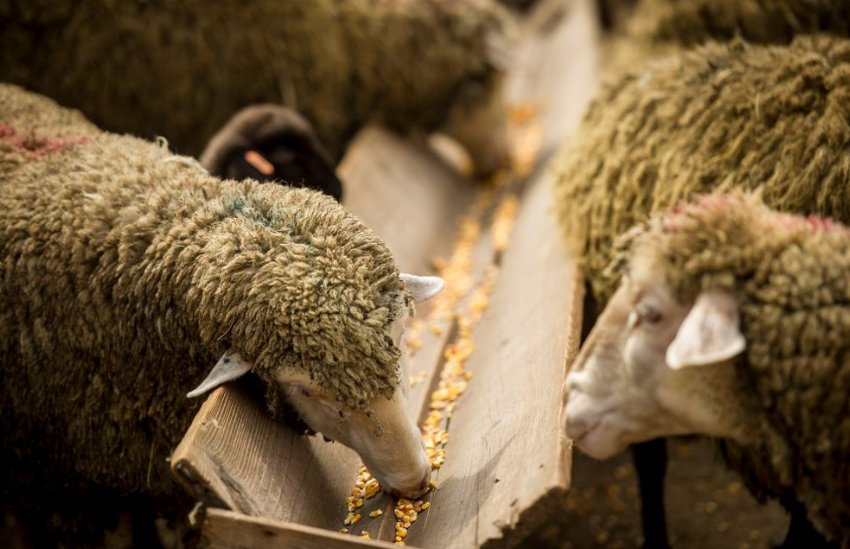
How long does a mother feed her lambs?
Females feed babies with milk for up to 3 months. At the 4th month of life, the lambs are separated from the female and feed on their own pasture.
No milk: causes and ways to resume lactation
The main reasons for the lack of milk after childbirth in a sheep are:
- wrong distribution;
- malnutrition;
- lack of fluid intake;
- pathological childbirth;
- mastitis.
Important! After giving birth, a sheep can begin to give milk only after 4-5 days. This is especially common in primogeniture.
If milk does not appear when the diet improves, you need to look for another way to feed babies. So, they can be put to another suckling female or fed with cow’s milk. You can use cow’s dairy products from the third day of life of lambs. You need to give it in pairs from bottles with baby nipples.
Feeding sheep before lambing
Approximately 2 weeks before the uterus begins to kitten, only easily digestible foods are introduced into her diet. These include grass hay, silage. Drinking should be carried out at least 2 times a day. In the warm period, the need for water in queens is 6 liters per day, in winter – 3 liters. About a day before the start of the process, the sheep stop being fed, providing free access to water.

At what age can sheep produce offspring?
Females of all breeds, without exception, reach puberty at the age of 7-8 months, but they should not be allowed to males at this stage of development of the organism. The fact is that the animal is not yet mature enough to bear offspring. The most suitable age for mating in a female is between 12-18 months. Reproductive function in females lasts up to 12 years.
Caring for the uterus and newborn offspring
If the sukotny process went well, then after childbirth, no action is needed. After feeding, the offspring is immediately taken from the mother, kept in dry, clean rooms. Lead to the female during the first 8 days only for feeding, every 2 hours. The fact is that after childbirth, the behavioral reactions of the uterus are difficult to predetermine, therefore, in order to avoid various incidents, the babies are kept separately.
Did you know? On about. Madagascar locals to this day refuse to eat rams for food, because they believe that the souls of their dead ancestors are embodied in these animals.
In addition, during the week, you should carefully monitor the condition of the female – it happens that complications can occur even after a successful birth, after some time. Usually, pathologies manifest themselves in the form of mastitis or paresis. If several females gave birth at once, they can be kept in one pen. When they start feeding, they will recognize their babies by smell.

A week later, you can settle the offspring with their mother. Already during this period, they willingly eat not only dairy products. but they also pick at the feeders. It is important to build feeders in such a way that the kids cannot climb into them with their feet and spoil the food. Keeping sheep is a lucrative business. In the effectiveness of their breeding, the level of preparation of the sheep breeder for the adoption of childbirth in females plays an important role. Usually this phase passes without complications, the main thing is to carefully control it.
